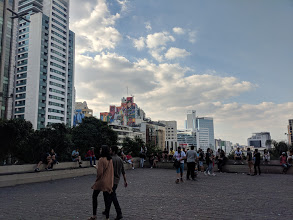Virtual museums: COVID-19 obligation turned accessible solution
August 28, 2020
The Tulane Hullabaloo is a nonprofit newsroom that receives no funding from Tulane University. Consider subscribing today to support our mission.
Artistic and cultural sectors have been among the hardest hit industries by the persistent effects of the global pandemic. Though some musicians and artists have been able to partially support themselves through live streams and Patreon accounts, museums face a unique set of challenges.
Earlier in the year, museums across the country received a combination of financial relief packages, ranging from direct payment through the CARES Act to loans. This support, however, is far from sufficient given that revenue continues to dwindle as the number of people patronizing museums in the U.S. is so low that one-third of museums could close as a result of the pandemic. To combat financial losses, hundreds of museums and galleries around the world have opened their doors to people by using technology to put their works online. With just a few clicks, people from around the world can visit anywhere from the Museu de Arte de São Paulo to Seoul’s National Museum of Modern and Contemporary Art.

Not only do online galleries offer an unprecedented level of accessibility for people who otherwise could not access these spaces, but they also provide an incentive for patrons to support museums financially by donating or purchasing memberships.
What if access to online museums became a permanent fixture in our collective imagination? Access to a rich, vibrant life full of moments of creative reprise should be a right rather than privilege. Admission prices and galleries themselves, however, are oftentimes inaccessible for many, including low-income individuals as well as members of the community who have mobility impairments. Thus, online exhibitions provide under-served communities with the opportunity to participate in a number of virtual experiences.
Though the circumstances under which online galleries have begun to flourish are certainly less than ideal, perhaps it exposes elements of profound unsustainability present in this sector. Museums have long struggled with issues of equity, justice and solidarity, and leaders must contend with these problems — new and old. Some of the industry’s most vulnerable workers, many of whom already struggled with low salaries as well as a lack of sick days and insurance, now face the numerous challenges brought forth by teleworking. Now more than ever, museums have the obligation to make art accessible for all and care for their most vulnerable workers.










Leave a Comment